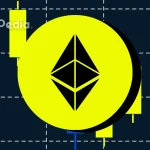While the US dollar -backed stable crypto currencies have recently maintained its place on the agenda, new talks with investors show that the focus shifted to the digitalization of real world assets (RWA). According to a report published by Bank of America (BAC), this development is considered as the beginning of a perennial transformation process to move traditional assets such as stocks, bonds, bank deposits and real estate to the blocky environment.
New era in Blokzincir infrastructure
According to the report, significant infrastructure investment is needed for this transformation. However, with the taking of the necessary steps, a global -scale instantity and an asset transfer system that can be traded every day of the week may be possible. In the analysis of Bank of America, it was noted that smart contracts guarantee compliance in this process.
It is stated that the transport of traditional assets to the blocky environment can allow these assets to digital sections, facilitate purchases and sells and increase access. It is thought that tolerance, especially in classrooms such as real estate, bonds and commodities, offers accessible new investment opportunities.
Dubai example and application areas
The report also embodies the developments in this field with examples. According to Bank of America analysts, the new digital real estate platform, which recently initiated by the Dubai Land Office (DLD), is a sign of this process. The platform aims to transfer the real estate of $ 16 billion to the digital environment by 2033 and to ensure access to a wider audience through divided property. The pilot initiated by the Dubai Land Office aims to digitize the $ 16 billion real estate by 2033 and to allow divided property.
Thanks to such applications, investors can have small shares and have assets even in large projects. At the same time, it is easier to buy and sell non -liquid beings. Thus, the market is hoped to increase flexibility and access.
Possible effects in the banking sector
In the report of Bank of America, the effects of the spread of blocky -based transactions on the existing financial institutions are also evaluated among investors. In particular, the potential change that Citi can create in the field of transaction services is on the agenda. Citi’s income from this area accounts for approximately 40 percent of the total profit of the bank.
BAC Report: Although there is a risk of change in traditional income items, Citi’s knowledge and compliance capability in the blocky field may not be taken into consideration by the investors.
Although the probability of a decrease in net interest income or other wage income is not completely ignored, CITI and similar financial institutions have the potential to adapt to technology. Sector experts say that existing institutions have experience in adapting to the world of blockzincir.
As a result, the report states that the tolerance of real world assets can be an important turning point in the transition of blockyin technology to real applications. Experts predict that expected developments can lead to structural changes in the financial ecosystem.
Responsibility Rejection: The information contained in this article does not contain investment advice. Investors should be aware that crypto currencies carry high volatility and thus risk and carry out their operations in line with their own research.









